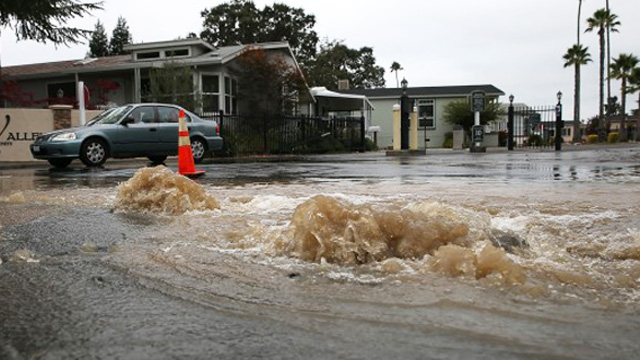
California seems to be experiencing one water disaster after another. On top of the drought, last month a 90-year-old water pipe ruptured on the UCLA campus leaking an estimated 20 million gallons of drinking water. On Sunday, a magnitude 6.0 earthquake damaged dozens of water pipes, leaving hundreds of Napa and Vallejo residents without water. These major incidents beg the question: how strong is our water infrastructure?
According to a new report by the San Jose Mercury News, local water agencies are losing about 23 billion gallons of treated water each year. Most of that loss is attributed to aging pipelines that leak before reaching customer meters.
“The system is aging,” Mercury News Science Reporter Lisa Kreiger told Michael Krasny on KQED’s Forum. Her analysis of water records shows Bay Area agencies lost between 3 and 16 percent of treated water in 2010.
Now that the state is in a drought, these old, leaky pipes are gaining attention. “When water is precious, monitoring and stopping these losses becomes important,” Krieger said.
According to Krieger, the San Francisco Public Utilities Commission and East Bay Municipal Utility District have done a good job of reporting their water losses to the state. But reporting leaks and losses isn’t mandatory in California, so many water districts aren’t reporting them.